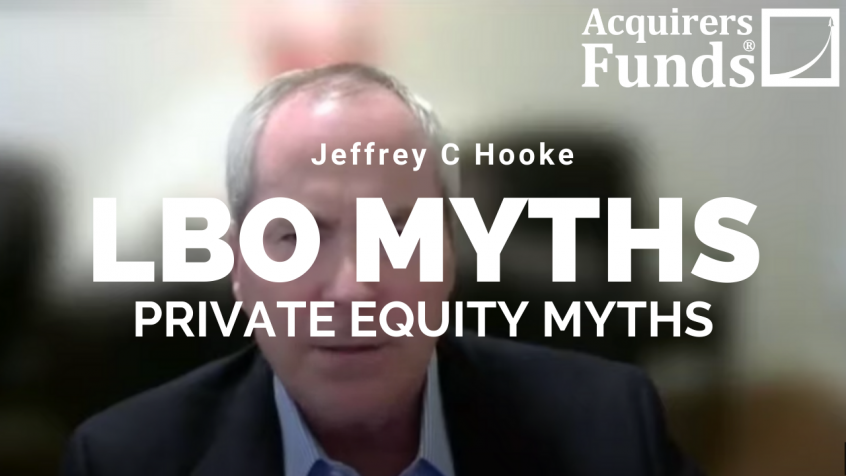During their recent interview on The Acquirers Podcast with Tobias, Jeffrey C. Hooke, finance professor and author of The Myth of Private Equity discussed IRR – The Faulty Metric of Private Equity. Here’s an excerpt from the interview:
Tobias: The part of the problem I understand is the calculation of the results. So, can you perhaps walk us through how the results are calculated and why that might give a misleading impression of what’s occurring in the funds?
Jeffrey: Well, first, your listeners ought to know that the actual numbers, the results are opaque. They’re often hidden. They’d be surprised that they’re– The industry has convinced legislators in many states to keep private equity fees hidden like the Pentagon keeps the nuclear launch codes hidden. There’s actually laws passed, where this is a secret, some national security type secrets. But for those where the numbers are out there, you’d be looked at three measurements, the first one is the most popular. It’s called the internal rate of return, and probably a lot of your listeners learned that in school if they took finance. That’s like, “Well, here’s the rate of return and using a discounted cash flow calculation.” For the last 10 years, it might be 10%, or 12%, or something of that nature.
They usually calculate the internal rate of return or the fund, and then compare it to something like the S&P 500, or they want to be actually, intellectually, honestly, they have to allow some premium to the S&P 500 to account for the illiquidity, which means that you can’t sell a private equity investment like you can sell a stock like Amazon stock. The first one’s the internal rate of return. But since it can be manipulated in various ways, and the ones that would be most obvious, and the easiest to explain is if you sell your good deals first as a fund, sell the good ones first and hold the dogs for eight or nine years, the way the math works is you boosted your rate of return.
So, a couple of professors designed a return mechanism that’s a little more comparable to say running a mutual fund with an index. That one can also be manipulated. I like it a little better, but can also be manipulated by selling the good deals first. So, you got some questions both one and two that have been addressed, not just by me, but other people that observe the industry.
You can find out more about Tobias’ podcast here – The Acquirers Podcast. You can also listen to the podcast on your favorite podcast platforms here:
For all the latest news and podcasts, join our free newsletter here.
Don’t forget to check out our FREE Large Cap 1000 – Stock Screener, here at The Acquirer’s Multiple:



